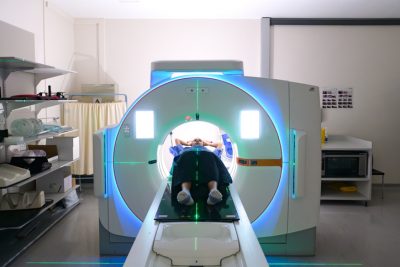
CT Coronary Artery Calcium Progression After an Initial Score of Zero
June 30, 2025
By Michael H. Crawford, MD
Synopsis: A large Korean study of asymptomatic subjects undergoing more than one computed tomography (CT) coronary calcium scoring scan as part of an employment-based health screening has shown that most had scores of 0, and that during a maximum follow-up of 12 years, the majority stayed at 0 on a repeat scan. Also, in those with a coronary artery calcium score of 0 initially, clinically significant scores (> 100) were only found in 4% of scans at 10-year follow-up.
Source: Sung DE, Lee MY, Lee JY, et al. Coronary artery calcification distribution and progression in over 70,000 asymptomatic individuals: Implications for assessment intervals and optimal testing age. Eur Heart J Cardiovasc Imaging. 2025; Apr 24. doi.org/10.1093/ehjci/jeaf100. [Online ahead of print].
Although computed tomography (CT) coronary artery calcium (CAC) score has been shown to be a predictor of the development of coronary artery disease (CAD) and related events, the appropriate population to apply this ionizing radiation-based imaging to and at what frequency is unclear. Thus, these investigators from Korea analyzed a cohort of 70,389 asymptomatic Koreans age > 30 years who had an initial and at least one follow-up CAC determination between 2010 and 2020, provided free of charge for most, based on their employment health plan’s screening program.
Excluded were those with missing data or a history of CAD. The primary outcome was the number with a follow-up CAC score of 0 among those with a baseline CAC score of 0. The secondary outcome was those with a baseline CAC score of 0 and a follow-up CAC score > 0. Over an average follow-up CAC time of almost six years in those with an initial score of 0, 83% remained at 0. In older women (> 50 years), 89% stayed at 0 and in older men (> 40 years), 79% stayed at 0. Overall < 1% developed clinically significant CAC scores (> 100) over six years.
After 10 years, the percent remaining at 0 was 67% overall, with 84% of older women and 65% of older men. Scores of > 100 at 10 years were 4% in older men and < 1% in older women. The authors concluded that in a large group of asymptomatic Koreans, most had a CAC score of 0 and the development of clinically significant CAC scores (> 100) over six years was rare. Even at 10-year follow-up, CAC scores > 100 occurred in only 4% of the subjects.
Commentary
This retrospective observational study was conducted to gain insight into the age- and sex-specific prevalence, incidence, and progression of CAC in a large group of asymptomatic individuals without known CAD. The investigators targeted a relatively young population in whom a CAC scan was offered as part of disease-screening benefits from an employment-based health plan and focused on those who had more than one scan performed. Follow-up extended to 12 years, facilitating the evaluation of changes in CAC over this time frame.
As one would expect, subjects whose CAC score went from 0 to > 0 had a higher incidence of CAD risk factors than those whose CAC score remained at 0 over the follow-up period: hypertension 24% vs. 12%, respectively; and diabetes 8% vs. 4%, respectively. This suggests that the risk profile of the individual is important in determining the utility of CAC scoring. Young individuals with no risk factors are highly unlikely to have a positive CAC and would rarely have a score > 100. Thus, there would not be much gain for the cost in these patients. On the other hand, in those older patients with risk factors, CAC scoring would be more likely to provide useful information to tailor prevention therapeutics.
Perhaps the most important data from this paper are the progression of CAC scores over time. In the demographic of the patients in this study, a repeat study in five to six years might show some progression or a CAC score > 0, but the presence of a CAC score > 100 would be rare. Even a follow-up in 10 years only yielded a 4% prevalence of a score > 100 in those starting with a CAC score of 0. Thus, if a repeat scan makes sense clinically, waiting five to 10 years seems reasonable.
There are limitations to this study to consider. This was a young East Asian cohort, and it is known that white individuals of similar age are more likely to have higher CAC scores. It was conducted at a single center, so we do not know if the results would be the same on different scanners. The time of follow-up CAC scanning was not prespecified, so there likely is a selection bias toward individuals more likely to have a positive CAC score. Finally, no clinical outcomes were collected.
Despite these limitations, this study will make me a lot less likely to repeat CAC scans in less than five to 10 years, or perhaps never, unless the expected results are highly likely to change patient management.
Michael H. Crawford, MD, is Professor Emeritus of Medicine and Consulting Cardiologist, UCSF Health, San Francisco.
A large Korean study of asymptomatic subjects undergoing more than one computed tomography (CT) coronary calcium scoring scan as part of an employment-based health screening has shown that most had scores of 0, and that during a maximum follow-up of 12 years, the majority stayed at 0 on a repeat scan. Also, in those with a coronary artery calcium score of 0 initially, clinically significant scores (> 100) were only found in 4% of scans at 10-year follow-up.
You have reached your article limit for the month. Subscribe now to access this article plus other member-only content.
- Award-winning Medical Content
- Latest Advances & Development in Medicine
- Unbiased Content